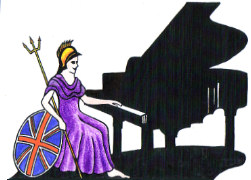Teachers, Accompanists and Piano Entertainers in the UK

UK Piano Page

126 Meadfield Rd
Langley
Langley, Berkshire SL3 7JF
England
Used and new acoustic and digital piano
111-113 Ewell Road
Surbiton, London KT6 6AL
England
We are one of the largest retailers of both new
36 New Yatt Road
witney
Witney, Oxfordshire ox28 1nz
England
Mildren Pianos is based in Witney, Oxfordshire.
34 Engate Street
London
Lewisham, London SE13 7HA
England
Robert Morley & Company Limited, established 1881
126 Deansgate
Manchester, Greater Manchester M3 2GR
England
Forsyth Brothers Limited offers an unrivalled
Music Festival for performers and guests Our 10th
18-06-2022 01:30PM
The Morecambe Bay Piano Group was set up to extend
11-12-2021 02:00PM
The Morecambe Bay Piano Group was set up to extend
08-01-2022 02:00PM
The Morecambe Bay Piano Group was set up to extend
12-02-2022 02:00PM
Temperament
Temperament is both the process and result of making slight changes to the pitches of a pure musical scale, so that the octave may be conveniently divided into a usable number of notes and intervals. In the history of Western music's 12-note octave tradition, there have been several, fundamentally different forms of temperament applied to the developing keyboard. Music suffers when performed in a tuning that is different than that which the composer used in its creation.
Well Temperament Keyboards
Well Temperament Keyboards may be tuned so that all keys are musically usable, but contain varying degrees of the "wolf". This is the tuning used in this recording. Between the Early Baroque and Romantic eras, the popular tuning was something between Meantone and Equal Temperament. This era was a brief, transitional stage in temperament history, but considering the music composed during this period, its importance cannot be overlooked. This style of tuning is called "Well Temperament" following the use of the term by J.S. Bach. The term refers to a genre, rather than a specific temperament, as there were many Well Temperaments in use between 1700 and 1825.